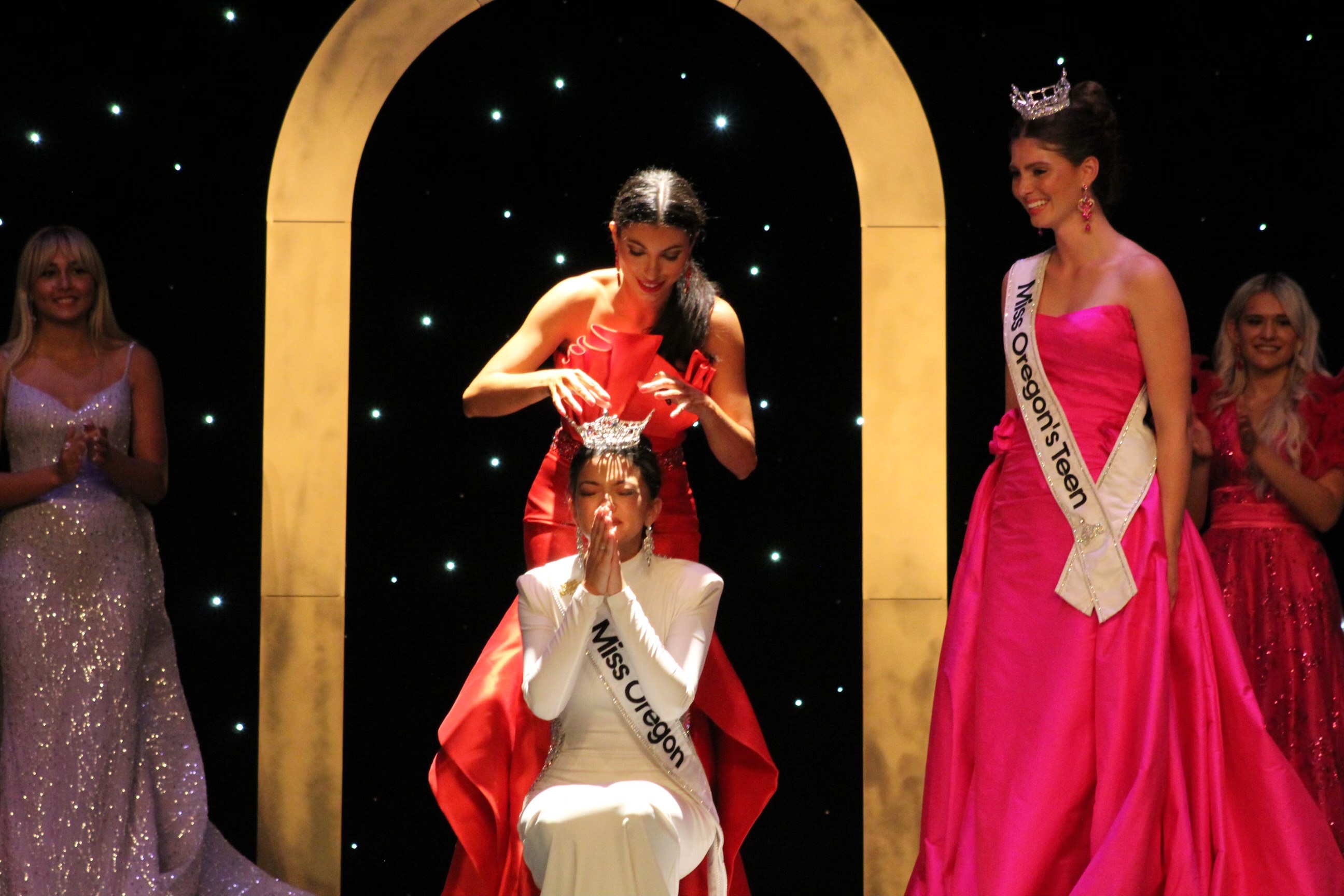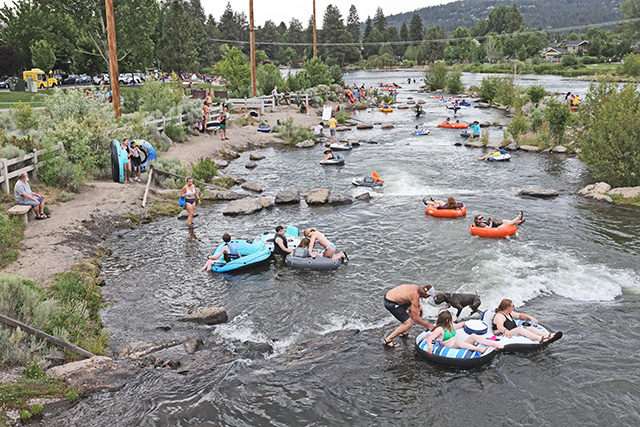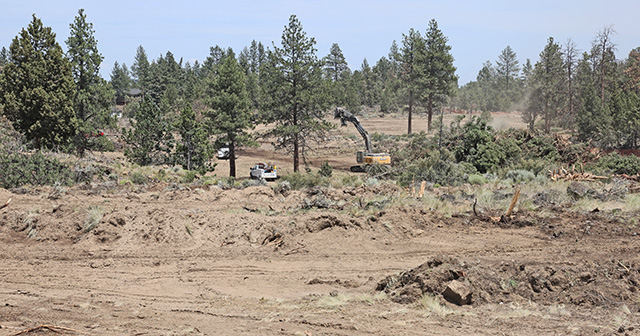Oregon’s colleges and universities signal ‘positive momentum’ with enrollment growth
Published 7:42 am Friday, November 29, 2024

- A view of the Oregon State University Corvallis campus in November 2021.
Enrollment at Oregon’s public colleges and universities climbed by 3% this fall, mirroring growth across the country.
Community colleges, which were hard hit by pandemic declines, posted the largest increase with about 4.3% more students compared to last year, and public universities climbed 1.7% compared to 2023.
“It’s a really encouraging enrollment report,” said Ben Cannon, director of the state’s Higher Education Coordinating Commission.
Students are clearly signaling an increased interest in higher education, Cannon said. Their concerns about how COVID-19 would impact their classes or educational experience seem to have receded with the pandemic, he said, and those who might have skipped college to go straight into the workforce also appear to be turning to higher education to boost their career prospects.
“Students are operating with a little more confidence in themselves and that their classes will be available in person,” Cannon said. “That’s all really positive momentum in the right direction.”
While the state’s community college numbers remain more than 17% lower than pre-pandemic levels, university enrollment has just about caught up. Oregon also appears to have bucked a national trend of widespread declines in first-year student enrollment at four-year schools.
The National Student Clearinghouse reports that first-year student enrollment was down 8.5% at public universities and down more than 10% at the universities where many students rely on federal financial aid called Pell Grants to help pay for their education.
National experts say it’s hard to pin down the reason for the drop, but say several factors could have contributed, including the federal government’s bungled rollout of an updated Free Application for Federal Student Aid that students rely on if they need the government to help pay for school. Other enrollment challenges include ongoing doubts among young people about the value of a college degree and Supreme Court mandated changes to race-conscious admissions.
“It’s startling to see such a substantial drop in freshmen,” clearinghouse research director Doug Shapiro told national outlet Inside Higher Ed.
First-year student enrollment hasn’t fallen precipitously for most universities in Oregon, where it is higher than in 2022, and down a mere 31 students statewide from 2023. Of Oregon’s seven public universities, just three lost first-year students, state data shows.
The Oregon Institute of Technology in Klamath Falls welcomed its largest first-year class in 40 years. Oregon State University’s 5,033 first-year students was also a decadelong high.
On the other hand, the universities that have faced the steepest enrollment declines since the pandemic began saw their first-year class shrink this year. Southern Oregon University is down 92 first-year students. Western Oregon University lost 90. Portland State University lost 84 first-year students this year.
Chuck Knepfle, vice president for enrollment management at Portland State University, said that less-selective universities focused on student access continue to weather the consequences of the headwinds that have hit vulnerable students the hardest.
“Between the FAFSA issues this fall, and ongoing erosion in the confidence in higher education and value of a college degree, schools like (Portland State) and (Western Oregon University) have borne the brunt of those effects on our enrollments,” Knepfle said.
The share of Oregon high school seniors who enroll in higher education after graduating declined sharply in the past decade, driven by the pandemic but also by student concerns about the high cost of tuition and fear of accumulating loan debt. Thousands of Oregon’s graduating seniors struggled to file the FAFSA when it was revamped last spring, and declines were most pronounced for students of color and those from low-income households.
The gap in FAFSA completion improved over the summer and fall. Oregon had one of the smallest declines in FAFSA completion this year compared with other states, data from the National College Attainment Network shows. By early October, Oregon’s FAFSA completion rates had caught up to 2023, and are now even higher, Cannon said.
He credits an “aggressive effort” by the state and outside organizations to help schools and parents file those forms.
Oregon’s universities start later in the year than many others across the country, Cannon said, and that may have helped reduce impacts from FAFSA delays. Community colleges also likely suffered less from late FAFSA’s because they have more flexible enrollment deadlines, he said.
“It got off to such a terrible start,” Cannon said of the FAFSA rollout, “but by the summer and fall most students’ experience was pretty good and pretty quick.”
Portland State’s first-year student enrollment has been declining since 2021, state data shows, but Knepfle says the FAFSA had an outsized impact on first-year enrollment in 2024.
That university serves more students who rely on Pell Grants than any other university in the state, Knepfle said, and many of the diverse and urban schools that the university pulls from were down nearly 10% in FAFSA completion, according to the national tracker.
“These are the students most at risk for not going to college, and importantly, they are also the students that PSU is most committed to serving,” Knepfle said. “With such a steep decline in FAFSA filing rates at our top feeder schools, being 5% down (in first-year students) is a win.”
Cannon agrees that Portland State, as an access-oriented institution, was “undoubtedly more vulnerable” to issues with the FAFSA this year.
While the state knows that completion rates of the federal form are up this year, Cannon hasn’t yet evaluated college enrollment trends specifically among the lowest-income students who receive Pell Grants, he said.
However, he’s confident the uptick in enrollment shows that state and federal efforts to make college more affordable are paying off. Oregon’s lawmakers have invested millions to increase state need-based aid. And the FAFSA now has a more generous formula, which means more students get more money, Cannon said.
“I believe we will eventually get data that shows we’re bringing tens of millions of additional federal dollars into Oregon to defray the cost of postsecondary education,” Cannon said.
Other 2024 enrollment trends of note:
- Umpqua Community College is the lone college to completely rebound to pre-pandemic enrollment, state data shows. It enrolled nearly 4,000 students this fall.
- Oregon State and the University of Oregon continued to see enrollment surge. Oregon State’s headcount is now up 16% from the fall of 2019 thanks to enrollment in its online programs, and the University of Oregon is up more than 8% from pre-pandemic numbers.
- Private school enrollment in Oregon was down about 1% this year compared to 2023, which the Alliance of Independent Colleges and Universities called “relatively stable.” About 27% of new first-time students at the private schools qualify for Pell Grants, an increase from last year.







